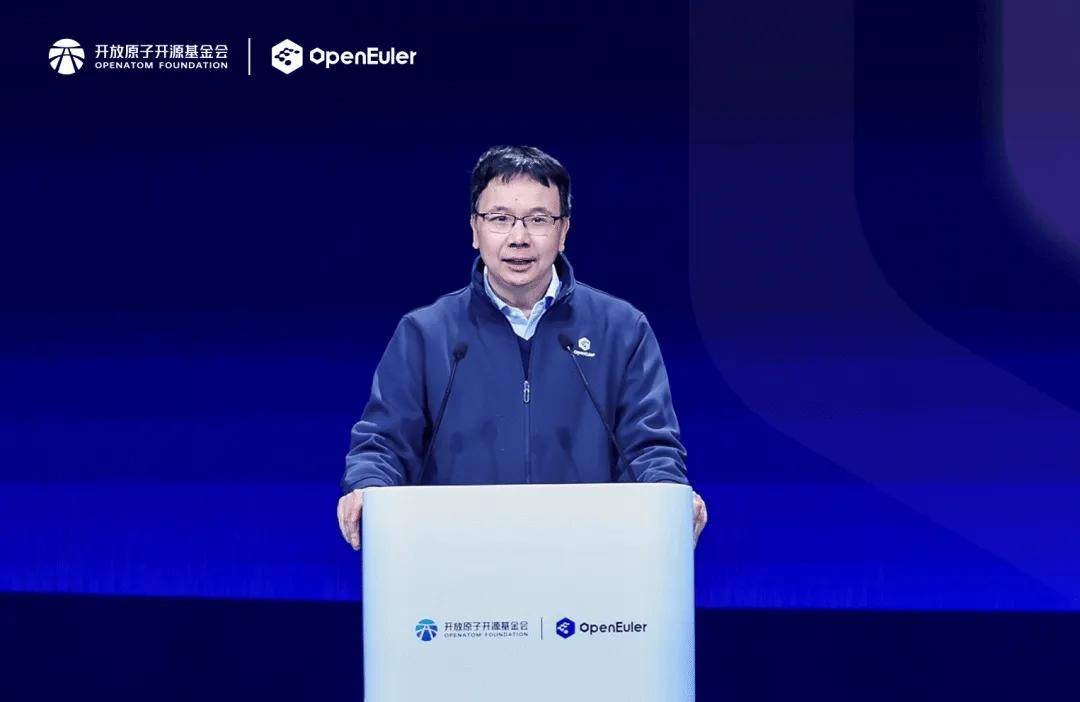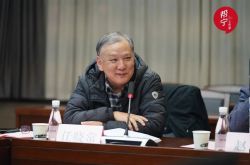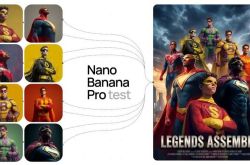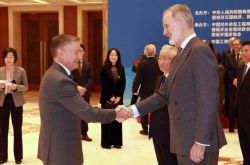When "Super Node" Emerges as the New Computing Paradigm, openEuler Reshapes Digital and Intelligent Infrastructure
![]() 11/26 2025
11/26 2025
![]() 389
389

As industries across the spectrum embrace full-scale intelligence and AI transitions from pilot projects to production systems, a pressing real-world challenge surfaces:
The parameter scale of large models has surged from hundreds of billions to trillions, while inference latency requirements have tightened from 50ms to just 15ms. Amidst the paradox of "bigger models, faster speeds," the traditional approach of stacking server cards can no longer sustain linear growth in computing power, posing unprecedented challenges to the coordination of computing, communication, and storage.
Correspondingly, the concept of "super nodes" has gained momentum, with Huawei, Baidu, Sugon, and others unveiling "super node servers." Leveraging technologies like ultra-high bandwidth, ultra-low latency, and unified memory addressing, these servers break through bottlenecks in computing coordination, enabling clusters to operate as efficiently as a single computer.
After dismantling physical "hardware silos," a matching "nerve center" is essential. The operating system, which bridges hardware at the lower level and supports applications at the upper level, takes center stage.
For instance, at the 2025 Operating System Conference on November 14, openEuler, in collaboration with dozens of industry partners, sent a clear signal: to jointly build a super node-oriented operating system for the intelligent era, deeply integrating AI capabilities into the system's core and accelerating AI innovation and deployment.
01 What Capabilities Should a Super Node-Oriented Operating System Possess?
In the computing infrastructure puzzle, the operating system serves as the pivotal "central layer," bridging underlying hardware and upper-level applications.
As Chinese Academy of Engineering academician Ni Guangnan noted in his keynote at the 2025 Operating System Conference, "Super nodes have become the mainstream form of computing infrastructure construction and deployment. The operating system in the intelligent era will connect intelligent-era hardware and applications, becoming the core foundation for unleashing computing potential."
This raises a critical question: When super nodes become the mainstream form of next-generation computing infrastructure, what capabilities must an operating system possess?
Huawei Board Director and ICT BG CEO Yang Chaobin outlined the industry's "demand list" in his speech: The operating system must enable super node hardware and provide upper-level applications with core capabilities like high bandwidth, low latency, unified memory addressing, and resource pooling. For example, in scenarios like large model training and inference, search, and recommendation, computing should no longer be hindered by communication delays, thereby unlocking the full potential of super node clusters.

Let's simplify this technical jargon.
In latency-sensitive scenarios like large model training, real-time inference, search, and recommendation, communication delays can account for over 60% of task time. The computing unit completes its "current task" only to find the next batch of data "stuck in transit" or in a distant memory block.
Through capabilities like unified memory addressing, ultra-high bandwidth, and ultra-low latency, super nodes "integrate" resources previously scattered across physical nodes into a single, cohesive system. However, hardware coordination is only half the battle; the operating system must ensure communication scheduling is "as fast as memory access," resource views are sufficiently unified, and memory pooling is controllable, visible, and trustworthy—all determining whether computing power is truly usable.
The industry's demands are clear, so how should the operating system evolve?
Xiong Wei, Chairman of the OpenAtom OpenEuler Committee, proposed a "supply-side" solution, arguing that a super node-oriented operating system should possess three key characteristics:

First, global resource abstraction, unified memory addressing, and pooled device management. Instead of acting as a steward managing only its own "patch of land" (a single server), it should serve as the "cluster commander," treating all computing power, memory, and devices as a unified resource pool.
Second, heterogeneous resource fusion, high-bandwidth low-latency communication, and equal interconnection. The operating system must "fuse" different computing powers, such as GPUs, CPUs, and NPUs, and leverage high-bandwidth, low-latency communication to "equally interconnect" and coordinate diverse computing units.
Third, a global resource view with compatibility and native interfaces. For upper-level AI frameworks and large model developers, the operating system provides a clean "global resource view," including compatibility and native interfaces, further lowering the adaptation threshold.
A key milestone: the world's first super node-oriented operating system, openEuler 24.03 LTS SP3, will launch in the community on December 30, 2025. In other words, 2026 will mark the first year of commercialization for "super node" operating systems.
02 The Era of "Super Nodes + Large Models": Domestic Operating Systems Take the Lead
Whether it's the emergence of the "super node" architecture or innovations in super node-oriented operating systems, both are driven by industry demand.
At the 2025 Operating System Conference, the OpenAtom Open Source Foundation, Huawei, and China Telecom Tianyi Cloud announced a joint development initiative to promote technological co-construction, ecological co-building, and business mutual benefit. They aim to jointly enhance the operating system's competitiveness in cutting-edge fields like AI and super nodes, driving the prosperity of the Tianyi Cloud and OpenEuler ecosystems.

Within the openEuler community, industry participants like China Telecom have converged, forming a powerful industry-level force.
A set of data underscores this: The openEuler community has attracted over 2,100 leading enterprises, research institutions, and universities, with more than 23,000 open-source contributors. Global downloads have surpassed 5.5 million, with 42 mirror nodes deployed worldwide, serving 178 countries and regions. By the end of 2025, the cumulative installed base of openEuler-based operating systems is expected to exceed 16 million units.
Industry participants, with keen instincts, have demonstrated through their actions that "super nodes" are not just transforming computing architectures but are subtly reshaping a new computing power order.
First, the way enterprises acquire intelligent computing power.
For a long time, enterprises training large models faced a "cottage industry-like" dilemma—spending months debugging to make a stack of expensive hardware work together. Communication walls, memory walls, and complexity walls acted as barriers, blocking data flow.
Two months ago at HC 2025, Huawei announced it would open the Lingqu 2.0 technical specification, super node reference architecture, super node basic hardware, and open-source operating system Lingqu components, enabling the industry to develop related products or components based on the technical specifications and independently design various products based on Lingqu.
The super node-oriented operating system openEuler 24.03 LTS SP3 achieves capabilities like unified memory addressing, resource pooling, and heterogeneous coordination at the operating system level. Complex system tuning abilities previously mastered only by top tech companies have now become a "universal technology."
Enterprises no longer need to worry about whether the underlying cards are from Factory A or B or about cross-node communication delays. The operating system automatically handles global resource abstraction and scheduling, improving the efficiency of large model training and inference and significantly shortening the popularization cycle of intelligence.
Second, the leapfrog rise of "domestic operating systems."
When discussing domestic operating systems, words like security and "backup" may come to mind. To achieve autonomy and controllability, performance or usability often had to be sacrificed.
However, at the 2025 Operating System Conference, Intel, Arm, and AMD—three major chip companies—all became donors to the openEuler community. Dozens of operating system vendors became the first global pioneer partners of the OpenEuler community, and openEuler's globalization process is in full swing.

The reason is clear: The super node architecture inherently requires multi-architecture coordination of CPUs/GPUs/NPUs, and global chip companies and industry clients have found a unified interface layer in openEuler. This reflects a crucial industry signal: The domestic operating system ecosystem, represented by openEuler, has moved beyond the stage of pursuing "alternatives" and entered a new cycle of "infrastructure innovation."
In cutting-edge fields like super nodes and large models, openEuler and its partners are exploring uncharted territory to solve industry-needed challenges, not just for "security fallback" but to systematically reconstruct high-performance computing, resource management methods, and digital and intelligent foundations.
As we observe: Driven by thousands of enterprises and tens of thousands of developers, openEuler has become the "formulator of new computing power paradigms."
03 Conclusion
Taking a longer-term perspective, openEuler has undergone repeated identity transformations.
When it first open-sourced in late 2019, it was seen as an alternative to CentOS;
Four years ago, evolving into community autonomy, openEuler became a mainstream player in the Chinese operating system market;
By the end of 2024, openEuler's market share in China's newly added server operating system sector reached 50%.
Now, openEuler is demonstrating to the world what an operating system should look like in a new era where physical boundaries are broken down, and intelligence is ubiquitous. It is even safe to assert: In the next five years, super node-oriented operating systems will become a watershed in the competition for intelligent computing power.







